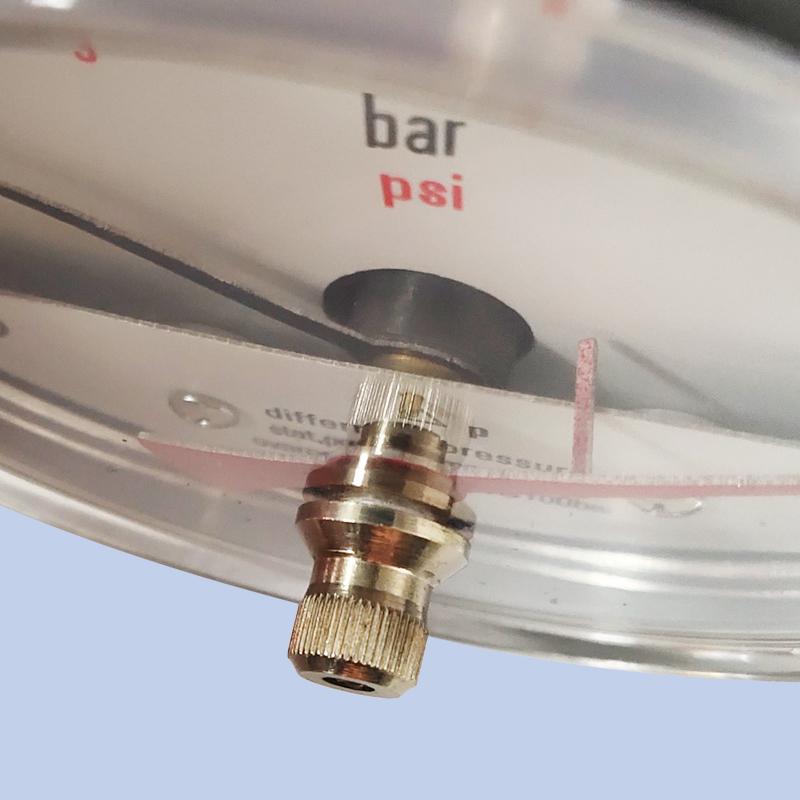
Aug . 09, 2024 01:25 Back to list
Innovative Low Pressure Differential Pressure Gauge Designed for Accurate Measurements in Various Applications
Understanding Low Pressure Differential Pressure Gauges
In industrial and laboratory environments, accurate pressure measurement is crucial for maintaining system integrity and operational efficiency. One of the essential instruments used for this purpose is the low pressure differential pressure gauge (DP gauge). This article will delve into the significance, functionality, and applications of low pressure differential pressure gauges, highlighting their role in various fields.
What is a Low Pressure Differential Pressure Gauge?
A low pressure differential pressure gauge is a specialized instrument designed to measure the difference in pressure between two locations within a system. These gauges are particularly valuable in scenarios where the pressure differences are minimal, typically measured in inches of water column (in. WC) or millibars (mbar). Unlike standard pressure gauges, which measure absolute or gauge pressure, differential pressure gauges are adept at detecting small fluctuations that can have significant implications for system performance.
Functionality of Low Pressure Differential Pressure Gauges
The operation of low pressure differential pressure gauges is relatively straightforward yet sophisticated. At the core of the gauge is a sensing element that reacts to pressure changes. This element often employs a diaphragm or a tube structure that deforms in response to the difference in pressure between the two sensing ports. The mechanical movement is then translated into an electrical signal or a visual readout on a calibrated scale.
Low pressure DP gauges can come in various forms, including mechanical analog gauges and digital models. While mechanical gauges provide a traditional visual display, digital models offer enhanced features such as data logging, remote readings, and integration with automation systems, making them highly versatile for modern applications.
Applications of Low Pressure Differential Pressure Gauges
low pressure differential pressure gauge product

Low pressure differential pressure gauges find applications across a wide range of industries. One of the most common uses is in HVAC (Heating, Ventilation, and Air Conditioning) systems. In HVAC applications, these gauges are employed to monitor filter conditions, ensuring that air filters are clean and functioning optimally. A significant pressure drop across filters indicates that they may need maintenance or replacement, thereby improving air quality and system efficiency.
In the pharmaceutical industry, maintaining precise pressure conditions is vital for the efficacy of processes and products. Low pressure differential pressure gauges help monitor the pressure differentials in cleanroom environments, ensuring that contaminants are adequately managed and that sterility is maintained.
Additionally, these gauges are used in various process industries, including water treatment, food and beverage manufacturing, and petrochemical production. They aid in monitoring flow rates, verifying flow measurement devices, and ensuring the proper operation of pumps and compressors by providing critical data on pressure differentials.
Advantages of Low Pressure Differential Pressure Gauges
The benefits of using low pressure differential pressure gauges are numerous. First and foremost, they enhance safety by enabling proactive maintenance and immediate detection of potential issues, thereby preventing costly downtimes or catastrophic failures. Their ability to provide real-time data improves operational efficiency, allowing for timely interventions.
Furthermore, with advancements in technology, modern low pressure DP gauges offer greater accuracy, reliability, and connectivity options, making them indispensable tools in today's data-driven industrial environments.
Conclusion
In conclusion, low pressure differential pressure gauges are vital instruments that play a significant role in various industries by ensuring optimal system performance and safety. Understanding their functionality and applications helps industries utilize them effectively, leading to improved efficiency and reliability in operations. As technology continues to evolve, these gauges are likely to become even more integrated into automated systems, enhancing their value in modern industry.
-
High-Precision 5 Valve Manifold Differential Pressure Gauge Suppliers
NewsApr.29,2025
-
High-Precision Diaphragm Vacuum Pressure Gauges Manufacturers & Quotes
NewsApr.29,2025
-
Omega Differential Pressure Gauges High Accuracy & Durability
NewsApr.28,2025
-
Low Pressure Differential Pressure Gauges Precision Solutions & Quotes
NewsApr.28,2025
-
Digital Diaphragm Pressure Gaauge Precision Measurement & OEM Quotes
NewsApr.28,2025
-
Differential Pressure Gauge China Price High-Accuracy & Best Quotes
NewsApr.28,2025
